I am the least patient person I know.
Counting down the days to a vacation? Brutal. Waiting for a text message to come in when I see the ominous three-dotted dialogue bubble? Agony. But where I find myself the least patient of all, it seems, is waiting in line.
That's just one of the reasons why I find the idea of a cashierless store so intriguing. And yes, such places do exist: one where you walk in, grab the items you desire off the shelf, and walk out with them.
Of course, it's not that simple -- after all, there's no such thing as a cashierless lunch. But when I found myself in San Francisco on the same day that Amazon's latest, cashierless Go store opened, I had to check it out.
Here's what happened -- and what I took away from the experience.
What It's Like to Visit an Amazon Go Store
How It Works
The San Francisco Amazon Go store isn't the first cashierless establishment within the city. Prior to this week's opening, there was Standard Market: a bodega-like cashierless store, but one with limited hours and selection
For Amazon, the San Francisco location marks its fifth Go store opening, with others having already launched in Seattle and Chicago. And, there are more store openings planned soon.
But before they can even set foot in the store, visitors must download the Amazon Go app, which links to your Amazon account and generates a bar code that's scanned (by a machine, not a person) upon entering. From there, just take whatever you want -- or put it back -- and walk out. The charges will then be made to your preferred form of payment on Amazon.
Here's a quick explainer from the app itself:
Inside the store, there was plenty of entertainment: ranging from the product selection, to the awe of its patrons. Had I turned the experience into a drinking game that involved imbibing every time I heard the words "so cool" -- well, I'm not sure I would have made it out alive, or at the very least, conscious.
But aside from the fascinated tourists stopping to take selfies with bottles of kombucha, browsing the store was quite an intriguing experience. The store was a bit small and therefore crowded -- something that should dissipate as the "newness" of the store wears off -- but the selection was, dare I say, impressive.
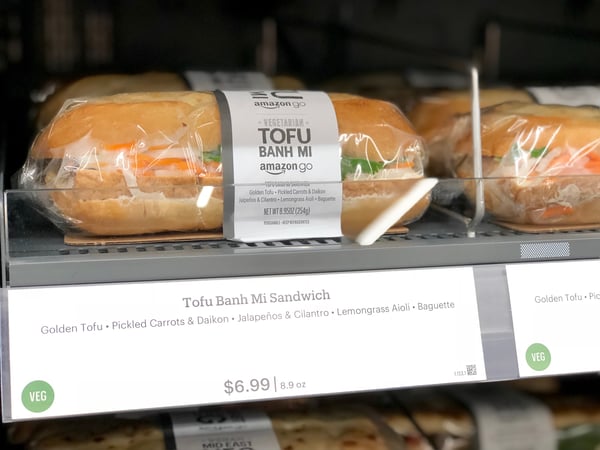
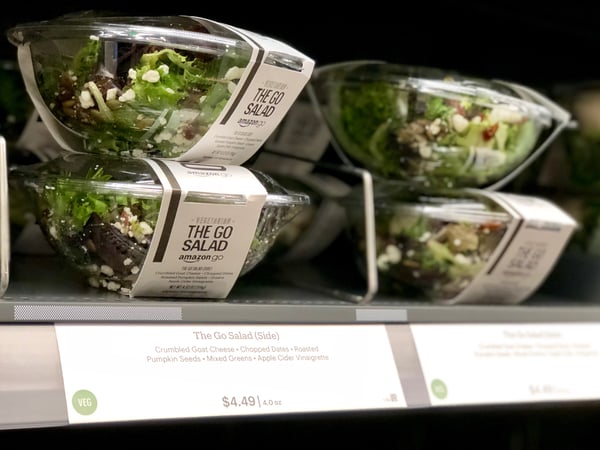
From prepared food, to frozen items, to shelf goods and Amazon meal kits, there truly was something for everyone, even if some of it had already sold out.
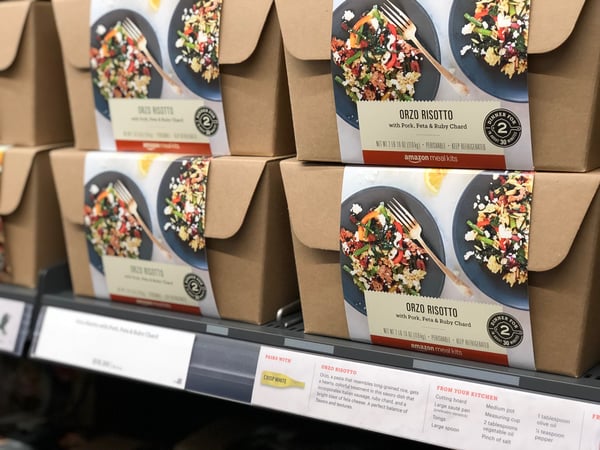
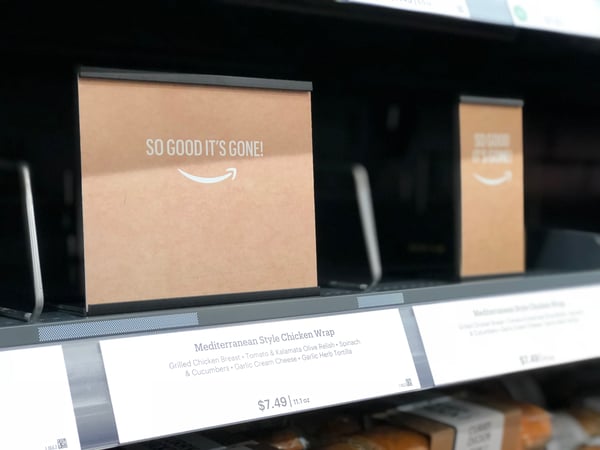
What was particularly fascinating was the disbelief among so many of my fellow patrons that there truly was no checkout process. Almost as frequently as I heard the "so cool" utterance, I also overheard the following exchange:
"How do I pay?"
"You just leave."
" ... I just walk out?"
"You just walk out."
How the Technology Works
Sure, that convenience is all well and good -- but how the heck does Amazon know exactly what I'm picking up, looking at, keeping or putting back, and ultimately leaving with ... all from scanning a barcode when I walk in?
On its official Go site, Amazon says that this transaction is made possible with a combination of "computer vision, sensor fusion, and deep learning."
But according to statements given to the Washington Post by Amazon Go VP of Technology Dilip Kumar, “The majority of sensing is from above. Cameras figure out which interactions you have with the shelves. Computer vision figures out which items are taken. Machine-learning algorithms also determine which item it is.”
So, does that mean Amazon is watching our behavior throughout the store, and maybe throwing in some of this machine learning to figure out what exactly we're buying?
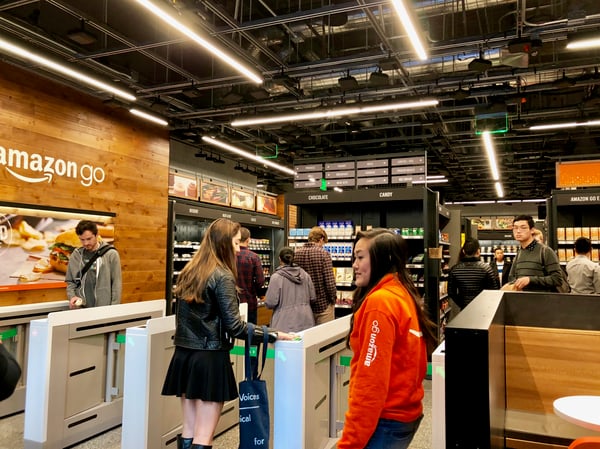
Maybe, though Amazon hasn't really said for sure. But it's having that highly detailed data on customers -- not just what they buy, but also, how they migrate through a store and decide to buy or put back -- that gives Amazon yet another boost in the area of personalization. That could further promote its lead in the area of online advertising, especially when it comes to making those ads relevant to respective users.
What I Took Away From the Amazon Go Experience
I left the store today with two key questions: 1) If I walk up this giant hill, does that mean I've earned this cupcake? And 2) Have we really become this impatient?
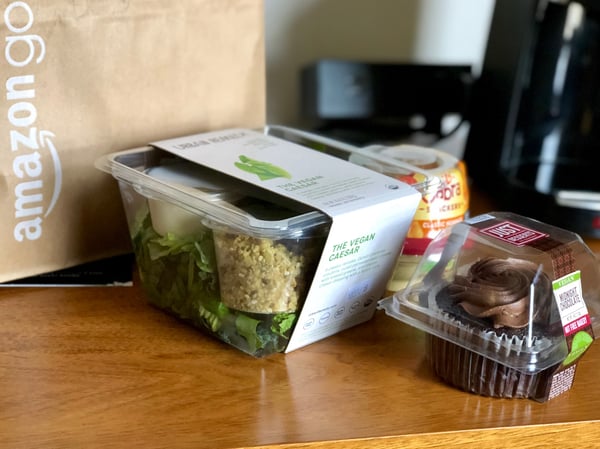
I know: I'm really one to talk. But even I began to question what the underlying message is when we, as a society, have become so busy, hurried, and hungry for a quicker solution that we're building stores that deliberately eliminate the need for a role filled by 3.5 million Americans: cashiers.
But the credo of convenience is one for which Amazon has stood for quite some time now. It makes shopping for items ranging from routine beauty products to holiday gifts as easy as entering (and saving) your credit card information and clicking "checkout." And that phenomenon expanded to its grocery delivery service, Fresh, as well as its two-hour delivery service, Prime Now.
And in recent years, Amazon has taken its legacy of convenience to brick-and-mortar establishments, both between these Go stores and its acquisition of Whole Foods super markets. So why bother having both?
Well, there are a few possibilities. While there's no public indication of such, it could be possible that Amazon is testing the option of a cashierless checkout option at Whole Foods stores, potentially causing quite the economic ripple effect if widespread enough.
There's also the idea of Amazon wanting to augment its brand with the concept of a "community" establishment being part of its portfolio -- one that comes with competitively-priced items, as this Go store does. Overheard at one point in my shopping experience: "These bars cost twice as much at Walgreens."
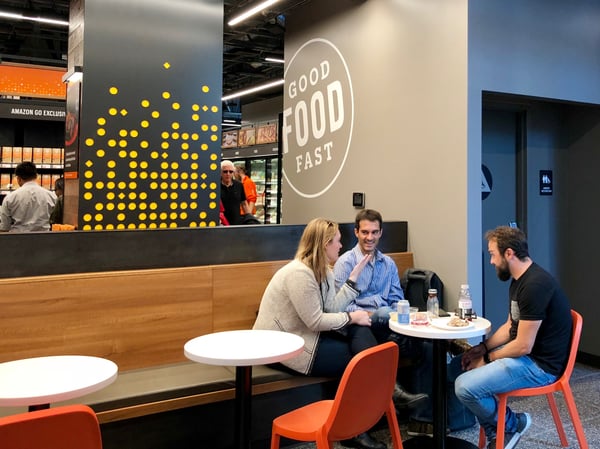 As mentioned previously, the Go store does have a bit of a bodega-like feel, and in some cases, includes goods from local businesses. (In the case of the San Francisco location, that's salads and other items from local chain Urban Remedy.)
As mentioned previously, the Go store does have a bit of a bodega-like feel, and in some cases, includes goods from local businesses. (In the case of the San Francisco location, that's salads and other items from local chain Urban Remedy.)
Ultimately, Amazon is doing what it has always done: speaking to the customer first, even if it's: 1) at the expense of smaller businesses, and 2) comes with a price tag of having our in-store migration patterns and buying behavior surveilled. But as we've seen, for instance, with users' unwillingness to leave Facebook in the face of numerous scandals: People appear to be willing to sacrifice privacy for a relatively unreplicable experience.
As for me, would I go back? Yes. After all is said and done, the experience was fun and simple enough for me to make a return visit.
So, what's next for the rest of us -- both as consumers, and as marketers or small-to-midsize business owners?
One option is to figure out how to work with Amazon in the face of unrelenting plans for growth. How can local business partner with Go stores, for example, in a way that makes sense for both brands and nearby consumers?
Moreover, maybe there's something in the Amazon guidebook to life and business that the rest of us can take away and apply to the day to day: to figure out how to associate our brands with addressing a customer's needs in a way that offers options, convenience, and something that's just downright, well, cool.
But if you'll excuse me, I have a chocolate cupcake to devour.
No comments:
Post a Comment